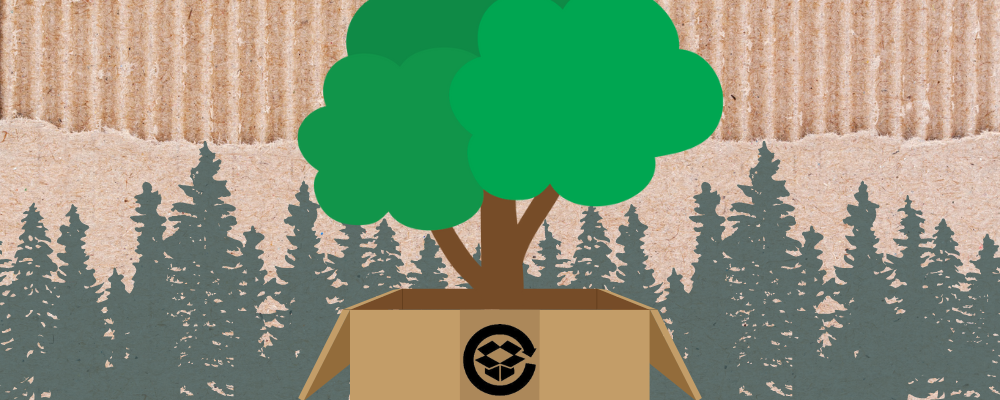
Corrugated is Sustainable
Corrugated is Renewable
Corrugated packaging is made from a renewable resource - trees - which are harvested like a crop.

A Renewable Resource
Corrugated packaging is renewable. The journey of the corrugated box begins in a sustainably-managed forest. There, certified foresters and loggers harvest just enough trees to make packages. And for each tree harvested, three more are planted to take its place. Corrugated cardboard is a renewable resource harvested as a crop.
Corrugated boxes are made with three main, natural ingredients: tree fiber, water, and starch. Our crops are trees, we just have a longer growing cycle. We can plant that same crop on a piece of land to produce the fiber, and once that’s done, we can use that land again to repeat the process.
Some similar principles of regenerative agriculture are the principles behind sustainable forestry. When a crop of trees—a forest—is planted, it’s supporting the soil and biodiversity, which supports sustainable watersheds and a healthier ecosystem. The tree farming practice allows them to grow, take in CO2, and get rid of greenhouse gas emissions.
Find facts on the renewability of corrugated packaging below:
- 96 percent of corrugated boxes are made with material supplied by certified fiber sourcing programs such as Sustainable Forestry Initiative® (SFI), Forest Stewardship Council (FSC), and American Tree Farm System (ATFS). Program participants are committed to sustainable forestry in their own forests, and are required to encourage their suppliers to practice sustainable forestry.
- There are more trees on U.S. forestland today than there were 100 years ago. Some 2 million acres of trees are planted each year, and tree growth is currently double that of annual removals. (American Forest & Paper Association’s (AF&PA) 2016 Sustainability Report)
- The forest products industry plants 1.7 million new trees every day, contributing to the long-term viability of North American forests, preserving wildlife habitats, sequestering carbon dioxide and offsetting greenhouse gas emissions. (SFI)
- Today, the United States has 20 percent more trees than it did on the first Earth Day celebration more than 40 years ago.
- 66.7 percent of the energy needs at U.S. pulp and paper mills is provided by biomass and renewable fuels, on average, in 2016. (AF&PA 2018 Sustainability Report.)
- Forest products facilities produce 70 percent of the renewable biomass energy used by the entire manufacturing sector.
Forest Certification
An American Forest & Paper Association (AF&PA) white paper provides an overview of sustainable forestry and forest certification programs in the United States. It is intended to serve as a general reference document, providing third-party factual information for forest product company employees, customers, the general public and other interested stakeholders. Click here to access the white paper.